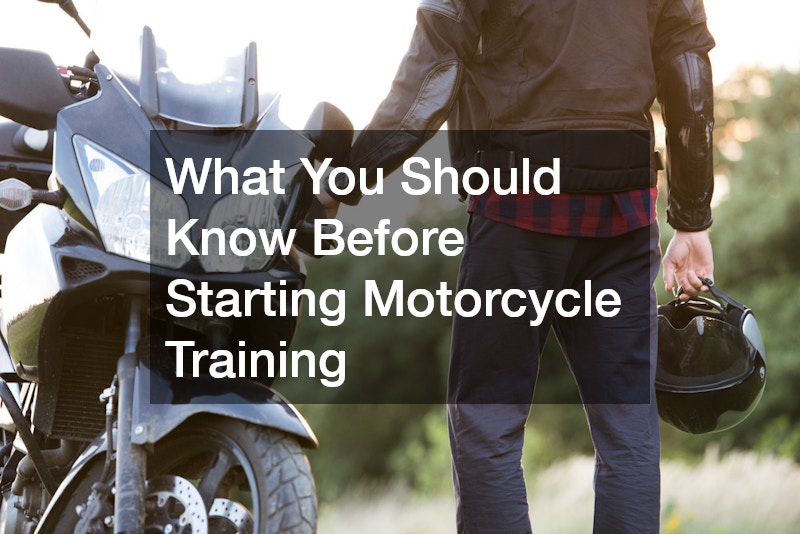
Embarking on the journey to become a proficient motorcycle rider is an exciting and rewarding endeavor. However, it’s crucial to approach motorcycle training with a clear understanding of what it entails and how to prepare. Whether you’re drawn to the freedom of the open road or the thrill of speed, proper training is essential for your safety and enjoyment. Here’s what you need to know before starting motorcycle training.
Understanding the Basics
Before you even set foot in a motorcycle training class, familiarize yourself with the basics of motorcycle operation. This includes understanding the different controls such as the throttle, clutch, brakes, and gears.
You don’t need to be an expert, but having a general idea will make your initial training sessions smoother.
Choosing the Right Training Program
Selecting a reputable motorcycle training program is vital. Look for programs that are certified by recognized organizations such as the Motorcycle Safety Foundation (MSF) in the United States. These programs adhere to high standards and provide comprehensive training that covers both theoretical knowledge and practical skills.
Gear Up Properly
Safety gear is non-negotiable when it comes to motorcycle training. Invest in high-quality protective gear, including a DOT-approved helmet, gloves, jacket, pants, and boots. The right gear not only protects you in case of a fall but also provides comfort and reduces fatigue during training sessions.
Know the Motorcycle Types
Different motorcycles are suited to different types of riding and skill levels. Beginners often start with lightweight, less powerful bikes that are easier to handle. Understanding the various types of motorcycles, such as cruisers, sportbikes, and touring bikes, can help you choose the right one for your training and future riding needs.
Physical Fitness Matters
Riding a motorcycle can be physically demanding. It requires strength, balance, and endurance. While you don’t need to be an athlete, maintaining a reasonable level of physical fitness will help you handle the bike more effectively and reduce the risk of fatigue-related mistakes.
Learn the Traffic Laws
Motorcycle riders must adhere to the same traffic laws as car drivers, plus some additional regulations specific to motorcycles. Familiarize yourself with these laws, which vary by state and country. Understanding the legal requirements, such as helmet laws and lane-splitting rules, will keep you safe and avoid legal troubles.
Mental Preparation
Riding a motorcycle requires a high level of focus and mental alertness. Be prepared to stay attentive and make quick decisions. Mental preparation also involves developing a calm and confident mindset. Nervousness can hinder your ability to learn and react appropriately, so approach training with a positive and open attitude.
Start Slow
Don’t rush the learning process. Begin with the basics and gradually build your skills. Most training programs start in a controlled environment where you can learn at a comfortable pace. Pay close attention to your instructor’s guidance and don’t hesitate to ask questions or request additional practice if needed.
Practice Makes Perfect
Practice is crucial in mastering motorcycle riding skills. Even after completing a training program, continue practicing regularly. Find safe areas to practice riding, especially skills like emergency braking, cornering, and slow-speed maneuvers. Consistent practice will build muscle memory and boost your confidence on the road.
Safety First
Safety should always be your top priority. This means not only wearing the right gear but also adopting safe riding habits. Always perform a pre-ride check of your motorcycle, including tires, brakes, lights, and fluids. Ride defensively, anticipating potential hazards and staying visible to other road users.
Joining a Riding Community
Joining a riding community or club can be beneficial for new riders. Experienced riders can offer valuable tips and support, and riding with others can enhance your skills and confidence. Additionally, being part of a community provides a sense of camaraderie and shared passion for motorcycling.
Continuing Education
Motorcycle training shouldn’t stop after you get your license. Advanced riding courses are available that focus on specific skills like advanced cornering, braking techniques, and handling different road conditions. These courses can further improve your riding abilities and safety.
Financial Considerations
Motorcycling can be an expensive hobby. Beyond the initial cost of training and purchasing a motorcycle, you’ll need to budget for ongoing expenses like insurance, maintenance, and gear. Plan your finances accordingly to ensure you can sustain this passion without financial strain.
Watch the video above to learn more before starting motorcycle training in Arizona! .

